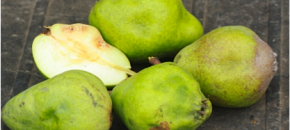
Fruit IPM Report 7-27-13 – Click to View | Download | Print In this report: Pear Peach Apple Grape Scouting Calendar Blueberry Trap Counts
Continue reading...Rutgers Cooperative Extension

Fruit IPM Report 7-27-13 – Click to View | Download | Print In this report: Pear Peach Apple Grape Scouting Calendar Blueberry Trap Counts
Continue reading...
Wow, what a difference a few weeks make! I was just checking out our nematode post from earlier this season and it started with comments on how mild the weather has been. There is nothing like a foot of rain and a couple weeks of 95+ºF heat to change our tune.
Continue reading...Late blight Update No Late blight has been reported in New Jersey this week. Basil Downy mildew – All basil growers should scout on a daily basis and should add a labeled downy mildew specific fungicide to their weekly fungicide program. Phosphite fungicides (FRAC code 33), such as Prophyt, K-Phite, and Rampart have shown the […]
Continue reading...7-23-13 Tomato Report – Click to Download Disease severity values (DSVs) for early blight, septoria leaf spot, and tomato anthracnose development are determined daily based on leaf wetness (due to rainfall, dew) and air temperature. On a daily basis DSV values can range from 0 to 4 where 0 = no chance for disease development […]
Continue reading...Potato Disease Forecasting Report 7-23-13 – Click to Download We will be tracking DSVs for Late blight development and calculating P-days for initiating the first early blight fungicide application. The first late blight fungicide application is recommended once 18 DSVs accumulate from green row. Green row typically occurs around the first week in May in southern […]
Continue reading...
